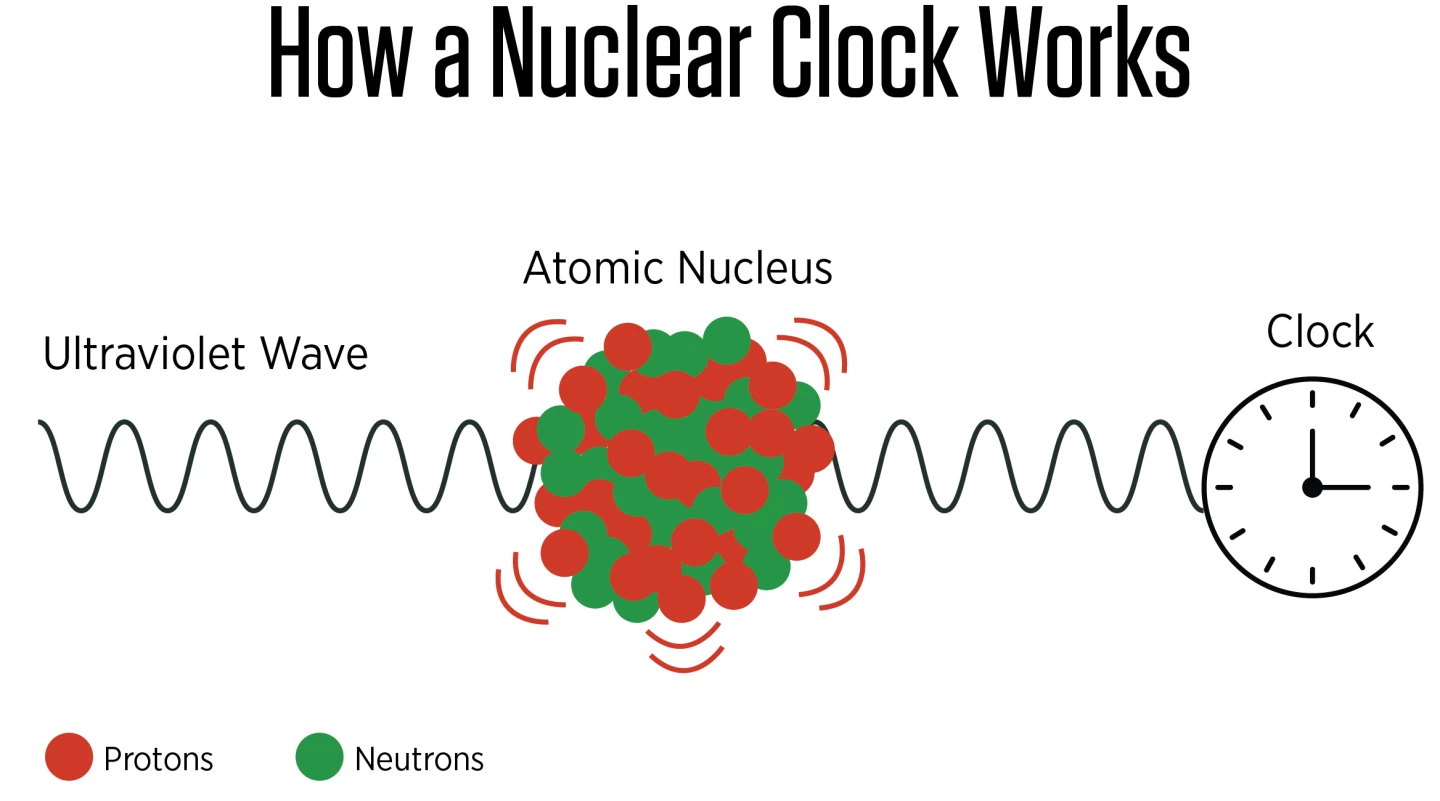Atomic clocks are the most accurate timekeepers we have, losing only seconds across billions of years. But apparently that’s not accurate enough – nuclear clocks could steal their thunder, speeding up GPS and the internet, among other things. Now, scientists have built and tested the first prototype nuclear clock.
Atomic clocks keep time by counting the vibrations of certain atoms, which are extremely regular. For instance, cesium-133 vibrates exactly 9,192,631,770 times per second, and atomic clocks measure that to officially designate the length of a second. Worldwide time is then synced through a network of atomic clocks, enabling high-speed internet, GPS, space launches and other technologies that require incredibly precise timekeeping.
And now, scientists are working towards a new type of clock that’s even more accurate. Nuclear clocks work on a similar principle, except instead of measuring the vibrations of a whole atom, they focus in on just the nucleus. That might not sound like much of a difference, but an atom is 100,000 times bigger than its nucleus, comparable to a blueberry sitting in the middle of a football stadium.
The nucleus has a much higher number of “ticks” per second, breaking down the second into even smaller chunks for more accurate timekeeping. As a bonus, it’s more stable against disturbances like electromagnetism that can mess up these measurements.
In both cases, the “ticking” comes from particles switching back and forth between two quantum states, when hit by a laser of a specific frequency. The problem is, a nuclear clock would normally require a much stronger laser than in atomic clocks – except for thorium-229. The nucleus of this atom has two quantum states that are much closer together in energy level, so a smaller kick is needed to jump between them.
Back in April, researchers at JILA finally managed to figure out the exact value of that energy difference, and then actively switched thorium nuclei between them for the first time. Doing so required an ultraviolet laser, instead of the usual infrared light used for atomic clocks.

Now the team has built on that work to demonstrate all the components needed to create a nuclear clock. A series of infrared laser pulses are fired at a xenon gas, which produces UV light in a predictable pattern. This UV light is then beamed at thorium nuclei suspended in a tiny crystal, to excite the protons and neutrons in there. An "optical frequency comb" counts the UV wave cycles to make the ultra-precise measurements of time.
The researchers also compared the UV frequency of the nuclear clock with the optical frequency used in the most precise atomic clock in the world. At this stage the nuclear clock is no faster than the atomic clocks it might one day replace, but the team says this was more a proof of concept study.
“With this first prototype, we have proven: Thorium can be used as a timekeeper for ultra-high-precision measurements,” says Thorsten Schumm, an author of the study. “All that is left to do is technical development work, with no more major obstacles to be expected.”
The researchers predict that the nuclear clock should surpass the precision of atomic clocks in two to three years, and should also be more portable and stable. If they take over the role, we could be in for much faster and more reliable communications, internet, GPS, and other technologies. They could even help scientists probe the fundamentals of physics and aid things like the search for dark matter.
The research was published in the journal Nature.





